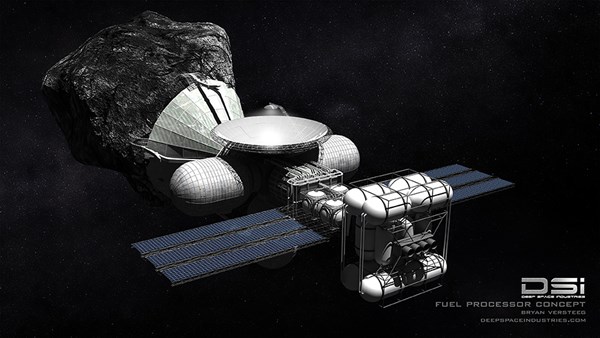SILICON VALLEY, Calif., July 20, 2015 (GLOBE NEWSWIRE) -- DSI congratulates NASA and the New Horizons team for the amazing success of their mission to the planet Pluto. The incredible images returned by the spacecraft show a tiny world with a surprisingly smooth and geologically active surface. The company notes that they appear to validate a theory published 44 years ago by Dr. John S. Lewis, presently Chief Scientist of Deep Space Industries (DSI), while he was a professor at MIT.
In 1971, while a professor at MIT, Dr. Lewis created thermal history models for ice-rich satellites such as Europa and Ganymede, based only on the heat released by long-lived radionuclide decay in their interiors. The models predicted that ice worlds could have deep, ice-covered oceans with periodic venting of liquids to the surface, erasing and preventing the accumulation of impact craters. Dr. Lewis' later thermal history models of Jupiter's large ice-free moon Io also provided an explanation for its constant resurfacing by sulfur volcanism.
"Pluto's impact-free surface and ice mountains likely result from the upwelling of materials, such as carbon monoxide and nitrogen, kept fluid by the decay of thorium, uranium and potassium isotopes that were present when it condensed from the solar nebula," said Dr. Lewis.
Some scientists later attributed the heat that created liquid water under the icy crusts of Europa and Ganymede to tidal stresses from their shifting orbits around the huge mass of Jupiter. This works well for the large, strongly interacting moons of Jupiter and Saturn. However, since Pluto and its moon Charon are firmly tidally locked and not releasing energy, this cannot be the source of the heat that has kept Pluto's surface refreshed and essentially free of impact craters over the eons, thus supporting his theory of nuclear decay.
"Be it Pluto, Ganymede or an asteroid, it is critical that we understand the geological processes at work in our neighborhood. Dr. Lewis is renowned for his deep understanding of solar system processes, which profoundly informs the exploration strategies of DSI for near Earth asteroids," said Daniel Faber, Chief Executive Officer. "All NEAs are travelers from further out in the solar system, and his knowledge is key to enabling DSI to profitably harvest them for the low-cost propellant and building materials that will energize the growth of the space economy."
"New Horizons is exactly the sort of project we need NASA and the world's space agencies to undertake," said Lewis. "Combining academic research, government exploration and commercial development we not only learn how the solar system came about and operates today, we will be better able to predict our future while enabling the human race to expand outwards tomorrow."
Dr. Lewis laid out his predictions in "Satellites of the Outer Planets: Their Physical and Chemical Nature" in Icarus 25, 174 (1971) as well as "Satellites of the Outer Planets: Thermal Models" in Science 172, 1127 (1971).mHis most recent book, Asteroid Mining 101, was published this year by DSI and is available on Amazon in print and digital formats. Dr. Lewis is the principal investigator on NASA contracts to DSI for the production of asteroid regolith simulants for research purposes, and the creation of storable propellants from asteroid volatiles.
Photos accompanying this release are available at:
http://www.globenewswire.com/newsroom/prs/?pkgid=34584
http://www.globenewswire.com/newsroom/prs/?pkgid=34585
NASA Pluto Images Predicted Forty Four Years Ago
New Horizons Pictures Support 1971 Theory by Deep Space Industries' Chief Scientist Dr. John S. Lewis
| Source: Deep Space Industries Inc.

